Review of the Annual Performance of Domestic Automakers
By Tao Yanyan
2. Xpeng with a focus on technology
3. Leading in sub-segment Ideal
In this fourth review of the domestic automakers, we have Li Auto. Li Auto delivered a total of 111,168 vehicles in 2022, a 154% increase from the previous year, which is a remarkable achievement. The company started from the bottom with T03 and then developed upward stages with C01 and C11. With the addition of extended-range powertrains, the product line and competitive landscape of Li Auto will go through significant changes.
Li Auto’s strategy is similar to BYD’s, with similarities in the following aspects:
-
Continuous iteration in R&D, relying on engineers to drive system evolution
-
Close positioning with mainstream products, producing high-cost-effective products
-
Building a complete in-house development system.
From the consumer’s standpoint, Li Auto, along with NIO, Ideal, and Xpeng, primarily focuses on 2C customers. However, as the growth of this price segment increases, the requirement for lower costs will become more stringent.
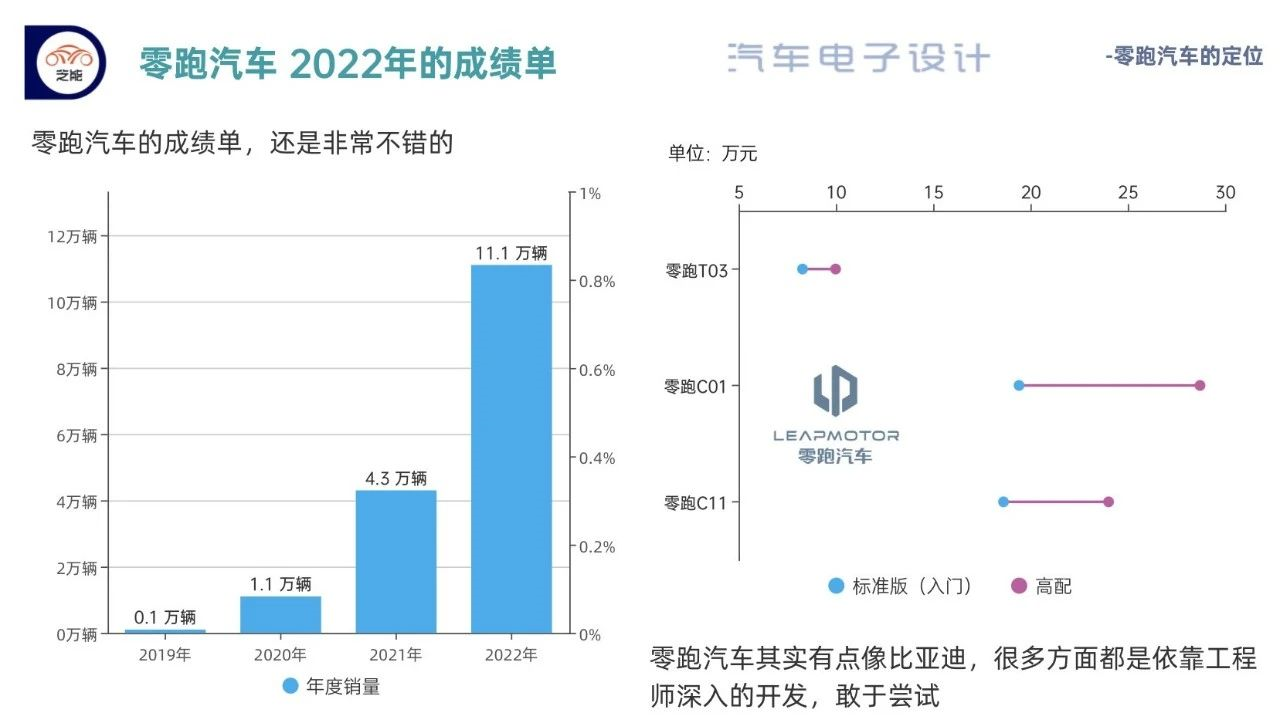
We also see the core challenge of Li Auto – the development process of pure electric products. Compared with Tesla’s segmented products, Li Auto digs into China’s domestic demand through high-cost-effective models (a few thousand yuan less than Tesla prices). Li Auto’s choice of extended-range powertrains may have been a strategic decision as a price war with pure electric and Tesla cars would have had a significant negative impact on its profit margins.
Choosing the route of extending the range is undoubtedly a strategic judgment, wherein cost optimization and added range shall be included in reducing the price.
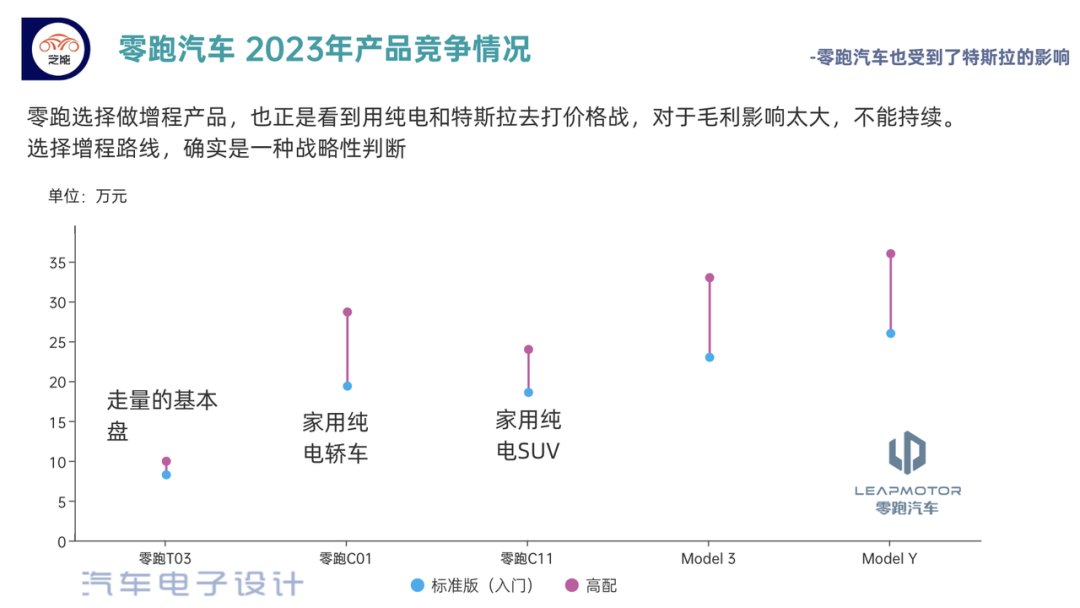 ## Deliveries of Leapmotor
## Deliveries of Leapmotor
We can see that initially Leapmotor entered the market through T03, which is an A00-level car. T03 has a long range, high configuration, and low vehicle cost, which is a completely different strategy compared to Wuling Motors, also an A00-level brand. With the reduction of subsidies, T03’s proportion may further decrease.
C01 and C11 are launched to meet the market demand for low-priced alternatives to Model 3 and Model Y, which is a very practical strategy.
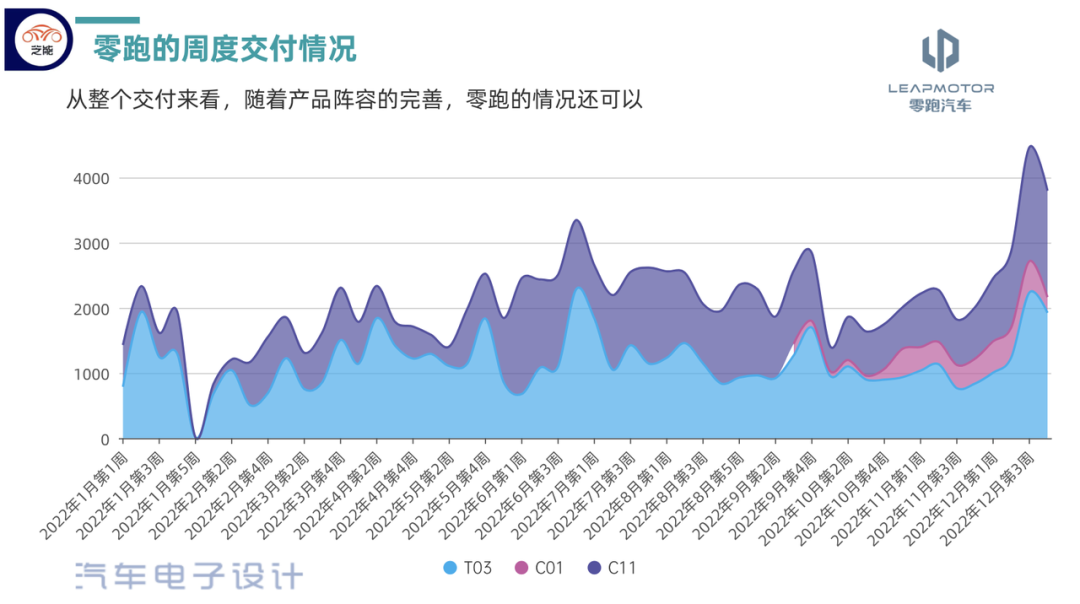
From the chart below, we can see that T03 still accounts for 55%, while C01 and C11 account for around 45%. Therefore, as Tesla and BYD continue to squeeze the market, Leapmotor’s response strategy is to focus on increasing the electric motor configuration around the power assembly and further optimizing the battery to solve this problem.
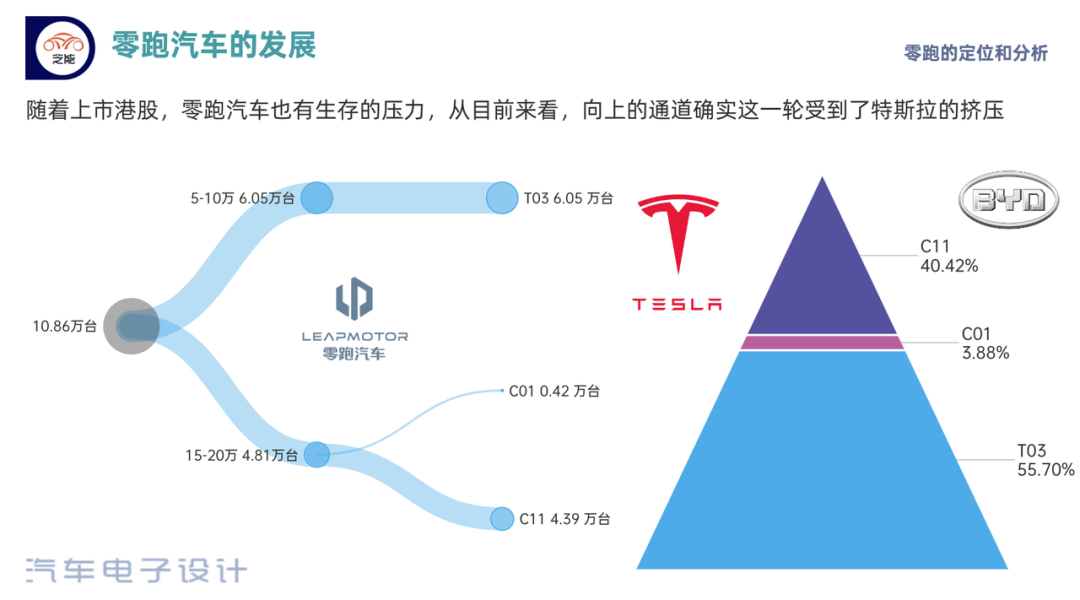
Discussion on Global Self-Development
Leapmotor will have many new products in the next few years. The product roadmap is as follows:
- Q1 2023: Leapmotor C11 extended-range version.
- Q3-Q4 2023: Leapmotor C01 extended-range version.
- Q3-Q4 2023: Leapmotor B11 mid-size SUV.
- 2024: Leapmotor A11 compact SUV.
There are also many technical development projects such as vehicle architecture, electrical architecture, battery architecture, electric drive architecture, and intelligent connected driving, which will be discussed separately in the future. With the push from research and development engineers, continuously iterating product development internally, Leapmotor is indeed similar to BYD, which both focus on self-development.
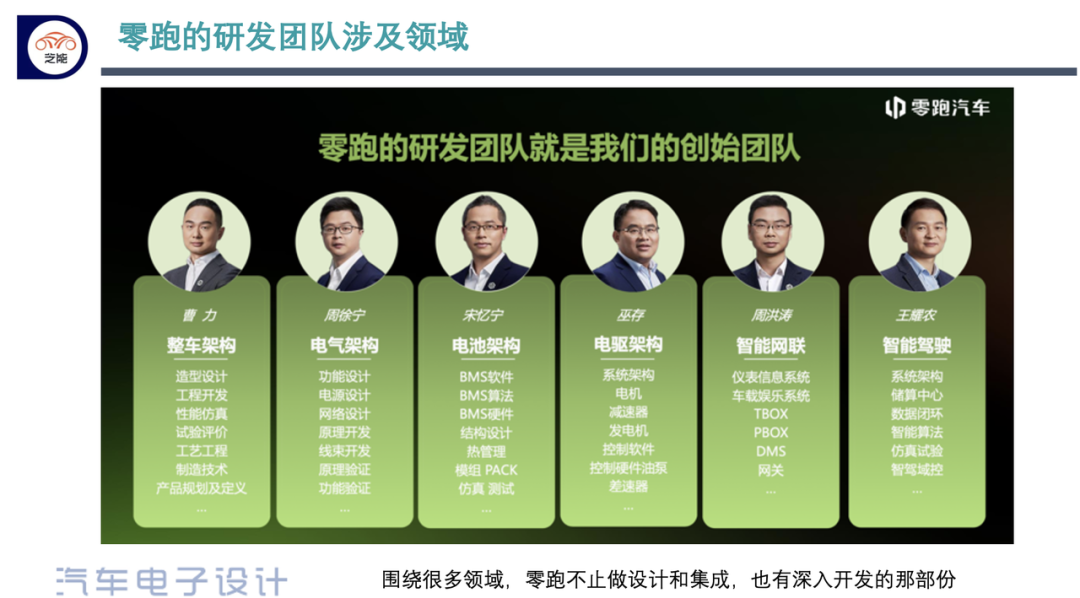 “`
“`
A company must decide whether it is easier to invest in in-house development or to purchase it from outside. This is a balancing act between development speed and reliability for most global car companies. For Chinese new energy vehicle companies, the benefits of self-research and development are:
- Fast development speed that allows for quick expansion of personnel
- Product differentiation that allows for unique designs through internal updates
However, the corresponding problems are also evident. Is in-house development competitive? Currently, we see more trend of in-house investment in technical development in XPeng Motors, BYD, and Zero Electric Vehicles. Whether self-development differentiation can win customer recognition, whether the scale is large enough and whether the investment can be amortized are all issues worth paying attention. I think it is worth continuously exploring the role of “global in-house research and development” at different stages by focusing on these companies.
Summary: As the fourth new energy vehicle company to be listed, Zero Electric Vehicles is quite remarkable and has not experienced the ups and downs of XPeng Motors. Currently, the company is still in the climbing stage, and it is worth our attention. This Thursday (February 9), Zero Electric Vehicles will release the C11 extended version, so stay tuned.
We recently released a disassembly battery video of Zero Electric Vehicles’ C01 and a comparison of the battery packs between the C01 and a seal. Follow us for more updates.
“`
This article is a translation by ChatGPT of a Chinese report from 42HOW. If you have any questions about it, please email bd@42how.com.
